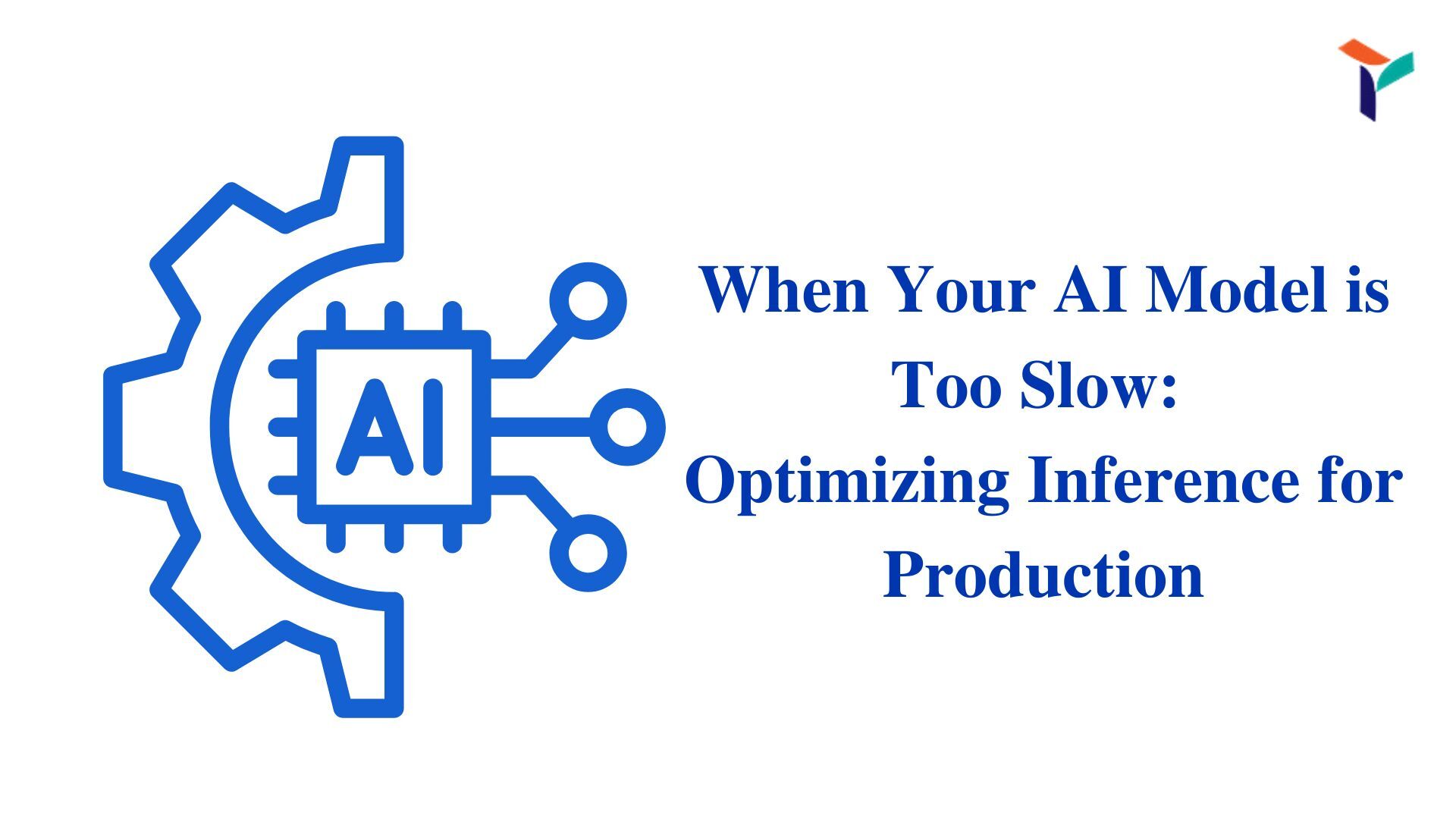When your AI model takes too long to respond, users leave. Business processes stall. Costs spike. In production, slow AI is broken AI.
Inference speed is the backbone of real-time AI applications. From fraud detection to personalized recommendations, your AI has to act fast.
Here’s how to optimize inference performance and ensure your models are production-ready, without compromising accuracy.
Why AI Inference Slows Down in Production
Even if your model performs well in training, production introduces real-world constraints — network latency, hardware limitations, concurrent users, and service complexity.
Key Bottlenecks:
- Model Complexity: Deep, multi-layered models require more compute power per prediction.
- Large Input Size: High-dimensional inputs (images, text) slow down preprocessing and prediction.
- Non-optimized Serving Stack: Poor server configurations, unbatched requests, and memory inefficiencies cause lags.
- Cold Starts: Serverless deployments or uninitialized containers delay first responses.
Understanding these bottlenecks is the first step in solving them.
Techniques to Optimize Model Inference
There’s no one-size-fits-all solution. But these strategies help across architectures and frameworks.
1. Quantization
Reduce model precision (e.g., from FP32 to INT8) without significant accuracy loss.
- Speeds up computation
- Reduces memory footprint
- Supported by most hardware accelerators
Tooling: TensorFlow Lite, PyTorch Quantization, ONNX Runtime
2. Model Pruning
Remove redundant weights or neurons.
- Shrinks model size
- Accelerates inference
- Useful in edge deployments
Use structured pruning for predictable performance gains.
3. Model Distillation
Train a smaller “student” model to replicate a larger “teacher” model’s outputs.
- Maintains core performance
- Ideal for mobile or real-time use cases
- Significantly faster inference
4. Hardware Acceleration
Run inference on the right hardware: GPUs, TPUs, or specialized inference chips like AWS Inferentia.
- Reduces latency drastically
- Use GPU batching to maximize throughput
Instead of overspending, measure gain vs. cost.
5. Batch Inference
Group requests together during processing.
- Maximizes hardware utilization
- Especially useful in high-traffic systems
Frameworks like TensorRT, TorchServe, and TF Serving support batching out of the box.
Architecture Tweaks That Improve Latency
Your infrastructure matters just as much as your model.
Deploy with Edge Locations
Send models closer to where the data is generated.
- Reduces roundtrip time
- Crucial for IoT, AR/VR, and mobile apps
Use Async and Streaming APIs
Avoid blocking synchronous calls.
- Enables concurrent processing
- Reduces timeout risks under high load
Container Optimization
Trim down your deployment images.
- Use minimal base images (e.g., Alpine)
- Preload models in memory
- Avoid unnecessary dependencies
Containers should be lean, warm, and fast.
Tools to Measure and Tune Inference Speed
You can’t fix what you don’t measure. These tools give insight into latency and resource usage:
- NVIDIA Nsight Systems: Deep profiling for GPU-based inference
- TensorBoard + TF Profiler: Analyze TensorFlow bottlenecks
- Torch Profiler: Understand PyTorch model execution
- Prometheus + Grafana: Monitor real-time performance metrics
Look at p95 and p99 latency, not just averages.
Common Pitfalls to Avoid
Optimization without strategy leads to regressions. Don’t fall into these traps:
- Over-pruning: Can drop accuracy below acceptable thresholds
- Blind quantization: May introduce unacceptable errors in edge cases
- Ignoring data pipeline: Preprocessing latency often outweighs model latency
- Cold start ignorance: Auto-scaling is only helpful if properly tuned
Balance is key. Speed should never come at the cost of critical accuracy or reliability.
When to Optimize (and When Not To)
Not every use case needs 10ms inference.
Optimize When:
- Real-time decisions are involved
- User-facing latency is a KPI
- Costs scale with compute time
Don’t Over-Optimize When:
- Batch processing suffices
- Accuracy is paramount
- Latency is already within acceptable thresholds
Pick the right tradeoffs. Performance tuning is a business decision, not just a technical one.
Conclusion
In production environments, speed is a requirement rather than a luxury. If your AI model lags, your business outcomes suffer. Whether real-time analytics, user personalization, or fraud prevention, inference latency directly impacts experience, efficiency, and ROI.
Effective AI inference optimization is more than just squeezing milliseconds. It’s about aligning your model, infrastructure, and deployment architecture to support high-performance, scalable decision-making at the pace your business demands.
TRIOTECH SYSTEMS helps enterprises achieve this alignment. From precision-tuned model deployment and DevOps integration to QA automation and cloud-native scalability, we deliver end-to-end engineering solutions that make AI work in production fast, reliable, and resilient.




